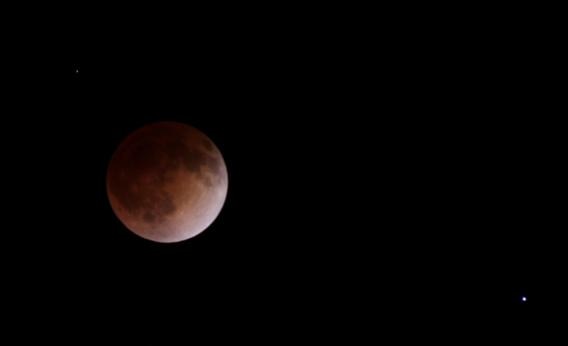Create a free profile to get unlimited access to exclusive videos, sweepstakes, and more!
Pull an All-Nighter for Tonight’s Lunar Eclipse

Wednesday morning, Oct. 8, starting at 09:14 UTC (05:14 ET), the Moon will slip into Earth’s shadow and we’ll get a full lunar eclipse.* To be clear, this happens after midnight tonight (Tuesday) for people in the U.S.
At that time, the edge of the Moon will start to darken, and at 10:25 UTC totality will begin when the entire Moon will be in shadow. That’ll last just under an hour, and then just over an hour later it’s all over.
This is a tough one for folks in the U.S. On the East Coast the Moon will set mid-eclipse, so getting up before dawn is the way to go. The farther west you are the better; folks in the Pacific time zone get to see essentially the whole thing, depending on their exact location.
I’ve written about lunar eclipses many times. I like them; they’re low pressure. It’s a slow event, so you can sit outside and watch, or just poke your head out a window every few minutes to see how it’s progressing. Taking photos is easy enough, too, and it’s not hard to get some pretty dramatic results if you have decent equipment.
You can get a lot more info pretty much everywhere on the Web. Sky and Telescope has the blow-by-blow, as does Universe Today, and as always Mr. Eclipse is a great resource. Also, the Virtual Telescope Project will have a live Web feed which will be worth watching.
One thing to note: Uranus will be very close to the Moon during the eclipse, so I expect we’ll see some pretty cool pictures of that conjunction. Uranus is tiny, but it’ll appear as a bluish-green star less than a degree east of the Moon. That’ll make a pretty sight in binoculars, too.
If you’re up, take a look! You won’t get another chance until April 4, 2015.
*Technically, the Moon enters the lighter part of Earth's shadow, called the penumbra, an hour earlier. However, the darkening is so slight it's very difficult to see. The Moon starts to enter the dark part of the shadow, called the umbra, at 09:14:48 UTC, which is when most people will want to start watching.


























